How to Effectively Utilize Polyacrylamide Dispersant in Industrial Applications
Table of Contents
- Understanding the Basics of Polyacrylamide Dispersants in Industry
- 5 Key Benefits of Using Polyacrylamide Dispersants for Enhanced Performance
- 3 Critical Factors to Consider When Selecting Polyacrylamide Dispersants
- 4 Best Practices for Implementing Polyacrylamide Dispersants in Manufacturing
- 2 Common Misconceptions About Polyacrylamide Dispersants and Their Uses
- FAQS
- Conclusion
- Related Posts
When it comes to industrial applications, using Polyacrylamide Dispersant effectively has really become a game-changer for boosting product performance and overall efficiency. Here at Qingdao Oubo Chemical Co., Ltd.—we’ve been around since 2011—we take pride in being a top supplier of different types of polyacrylamide, like cationic, anionic, and nonionic versions. We understand firsthand how important Polyacrylamide Dispersant is across a bunch of industries—whether it’s wastewater treatment, mining, or others. In this blog, I’ll walk you through some practical examples of how to use Polyacrylamide Dispersant in real-world situations, highlighting its benefits and sharing success stories that can help manufacturers and end-users get better results.
Think of this as a friendly guide to making the most of this versatile chemical and understanding how it can really make a difference in your day-to-day operations.
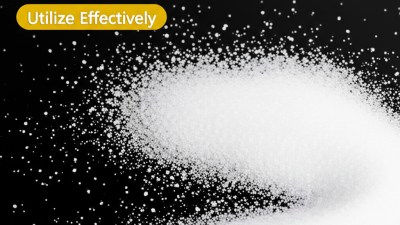
Understanding the Basics of Polyacrylamide Dispersants in Industry
Polyacrylamide dispersants are pretty essential in a bunch of industrial stuff these days. They help boost the stability and performance of all sorts of formulations. You know, they’re really good at breaking down mixtures and keeping everything stable so nothing clumps up or settles out. Take heavy crude oil extraction, for example — researchers have found that using imidazolium-based ionic liquids can really help keep asphaltene deposits in check. Without that, pipelines might get clogged, and production could grind to a halt, costing a fortune.
Pro tip: When you're choosing a polyacrylamide dispersant, don’t forget to think about how eco-friendly it is. Things like biodegradability matter a lot, especially if you’re working in agriculture or cleaning up oil spills. People are way more concerned these days about products that won’t harm marine life or the environment during a spill.
Another thing: Keep an eye on the latest trends and innovations in dispersant technology. There's a real push toward more sustainable solutions like bio-dispersants and bioremediation methods. These new tech options can really help tackle marine oil spills more effectively, while also keeping things greener. If businesses stay updated, they can not only meet stricter regulations but also help protect our planet.
All in all, the market for dispersants is evolving fast. There’s a clear move towards high-performance products that are safe for the environment. So, companies really need to stay on top of these changes if they want to stay competitive and responsible in the long run.
5 Key Benefits of Using Polyacrylamide Dispersants for Enhanced Performance
Polyacrylamide dispersants have really started to grab attention across a bunch of industries, mainly because they do such a great job at boosting performance. One of the biggest perks? They help keep suspensions and emulsions stable—without that, products like paints, coatings, and even wastewater treatments just wouldn’t be the same. Having particles evenly spread out is a game-changer for product quality and efficiency, no doubt.
And here’s another thing: these dispersants are pretty effective at lowering viscosity during processing, which means manufacturers can get things flowing more smoothly and use less energy. That’s a win all around because it reduces costs. I’ve seen market forecasts suggesting that the L-PAMiF and L-PAMiD sectors are set to grow a ton—from hundreds of millions of dollars in 2024 to even bigger numbers by 2033. They’re expecting a pretty solid CAGR of ZZZ%. Basically, this shows how much companies are counting on advanced dispersant tech to keep pushing performance higher.
Plus, the ability of polyacrylamide dispersants to disperse particles really well can seriously improve product features like brightness and texture. That’s especially important in industries like ceramics and inks, where you need really well-dispersed systems for top-notch results. As the market keeps expanding, throwing some investment into these dispersants seems like a smart move for companies looking to stay ahead of the game and meet changing industry standards and customer expectations.
How to Effectively Utilize Polyacrylamide Dispersant in Industrial Applications - 5 Key Benefits of Using Polyacrylamide Dispersants for Enhanced Performance
| Benefit | Description | Application Areas | Performance Impact |
|---|---|---|---|
| Enhanced Dispersion | Improves uniform distribution of particles in different media. | Paints and Coatings | Higher product stability and improved color quality. |
| Reduced Settling | Minimizes sedimentation and maintains longer shelf life. | Water Treatment | Enhances clarity and quality of treated water. |
| Improved Process Efficiency | Optimizes mixing and processing times in production. | Chemical Manufacturing | Increases throughput and reduces energy consumption. |
| Enhanced Compatibility | Works well with various materials and additives. | Construction Materials | Promotes better bonding and reduces issues in application. |
| Cost-Effectiveness | Lowers production costs by reducing waste and increasing yield. | Agricultural Applications | Enhances crop yields, reducing overall inputs needed. |
3 Critical Factors to Consider When Selecting Polyacrylamide Dispersants
When you're choosing polyacrylamide dispersants for industrial use, there are actually quite a few important factors you want to keep in mind—these can really affect how well they work. First off, the molecular weight of the dispersant is a big deal. Generally, the higher molecular weight polyacrylamides tend to give better stability and help control viscosity, which is why they’re often used in industries like mining or oil drilling. On the flip side, lower molecular weights might be better if you need something that disperses quickly and has a lower viscosity.
Another thing to consider is whether the dispersant is anionic or cationic. Anionic types are usually your go-to in systems with lots of ionic compounds—they help keep things stable. Cationic dispersants, on the other hand, are great if you need to help particles clump together or flocculate. And, of course, you can’t forget about compatibility—making sure your dispersant plays nicely with other chemicals in your mix is key to getting the best results and making your final product work like a charm.
Basically, picking the right polyacrylamide dispersant depends on what you’re trying to achieve and understanding these little nuances. It’s all about finding the right fit for your specific application.
Utilization of Polyacrylamide Dispersants in Industrial Applications
4 Best Practices for Implementing Polyacrylamide Dispersants in Manufacturing
When you're incorporating polyacrylamide dispersants into your industrial setup, it’s pretty important to follow some best practices to get the most out of them. First off, you really gotta evaluate what your specific process needs—since different formulations can perform quite differently depending on what you're working with and what you're aiming for. Doing some thorough compatibility tests between the dispersant and your materials can save you a lot of headaches and help you pick the right one.
Here's a tip: keep an eye on the dosage. Using too much or too little can really mess with the results. It’s often a matter of trial and error—so don’t be afraid to tweak the amounts based on test runs and keep an eye on things during production. That way, you make sure everything runs smoothly and waste is minimized.
And don’t forget about mixing! Proper mixing is crucial for the dispersant to do its job well. Depending on how big your operation is, use the right equipment that can mix things thoroughly. Bad mixing can cause clumps or just make the dispersant less effective overall.
Another tip: make sure you regularly calibrate your mixing gear. Keeping everything in check with routine maintenance helps you stay consistent and makes your whole process more efficient. Trust me, a little upkeep goes a long way!
2 Common Misconceptions About Polyacrylamide Dispersants and Their Uses
Polyacrylamide dispersants are used pretty widely across different industries, but there are quite a few misconceptions out there that can really lead to wasted effort or misunderstandings about what they can actually do. One common myth I hear a lot is that these dispersants are only good for certain kinds of materials. Guess what? That's actually not true at all! They’re actually pretty versatile and find applications in everything from ceramics and paints to petrochemical processes and agriculture. Their unique molecular structure helps them stabilize and spread out both organic and inorganic materials, making them super useful in a ton of different formulations.
And then there's the idea that you need to use tons of dispersant to see any good results. A lot of folks think that cranking up the dosage will automatically make things better. Turns out, that’s not the case. Using the right amount — not too much, not too little — is key to getting the best dispersion without messing up viscosity or creating foams. It’s all about knowing what each specific process needs and doing a bit of testing to find that sweet spot. When you get it right, you’ll use these dispersants more efficiently and save some money too.
FAQS
: Polyacrylamide dispersants are used in various industrial applications to improve the stability of suspensions and emulsions, optimize fluid flow, and enhance the performance characteristics of final products in industries such as paints, coatings, ceramics, and wastewater treatment.
They reduce viscosity during processing, allowing manufacturers to optimize fluid flow, minimize energy consumption, and achieve cost savings.
Critical factors include the molecular weight of the dispersant, its degree of anionicity or cationicity, and compatibility with other chemicals in the formulation.
Yes, they are versatile and can be applied across various industries, effectively stabilizing and dispersing both organic and inorganic materials.
Not necessarily. The optimal concentration is crucial for achieving desired results without negative effects like viscosity changes or foam formation.
They facilitate better particle dispersion, which improves product characteristics such as brightness and texture, especially in the ceramic and ink industries.
The market for polyacrylamide dispersants is expected to grow significantly, indicating an increasing reliance on advanced dispersant technologies across various sectors.
Higher molecular weight dispersants provide better stabilization and viscosity control, making them ideal for applications in mining and oil drilling.
Anionic dispersants are effective in stabilizing ionic suspension systems, while cationic dispersants are suitable for applications requiring flocculation and particle binding.
Compatibility ensures that the dispersant works harmoniously with other additives, maximizing performance and enhancing the overall effectiveness of the final product.
Conclusion
Polyacrylamide dispersants are pretty much essential in a bunch of industrial processes—they really help boost performance and efficiency. Honestly, getting a good grip on the basics of these dispersants is super important if you’re looking to optimize your operations. Some of the main perks? Better suspension stability, less sediment settling, and even distribution of solid particles—these make them pretty much a must-have in manufacturing.
When choosing a polyacrylamide dispersant, it’s best to think about things like what exactly you need for your specific application, whether it plays well with other materials, and what the environmental impact might be. Following some best practices can really help you get the most out of them, so your company can take full advantage. There’s a lot of hype and misconceptions around these products, but honestly, the ones from Qingdao Oubo Chemical Co., Ltd.—who specialize in all kinds of polyacrylamide—are proven to really improve industrial processes and make life easier.
Related Posts
-

The Ultimate Checklist for Selecting the Right Mixed Polyacrylamide for Your Business Needs
-

How to Maximize After Sales Support and Minimize Maintenance Costs for Best Apam Anionic Polyacrylamide
-
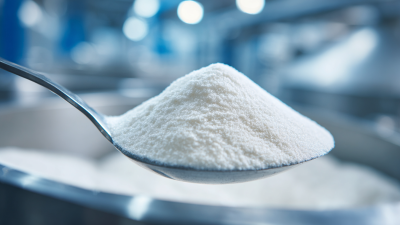
Comparative Analysis of Nonionic Polyacrylamide Versus Other Polymer Options in Industry Applications
-
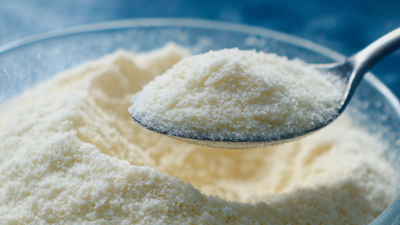
Unlocking the Advantages of Polyacrylamide Complex: A Game Changer for Industry Efficiency
-
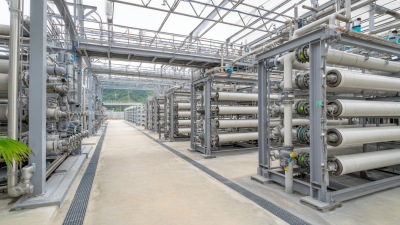
5 Essential Tips for Choosing the Right Ie/Ro Water Treatment Plant
-
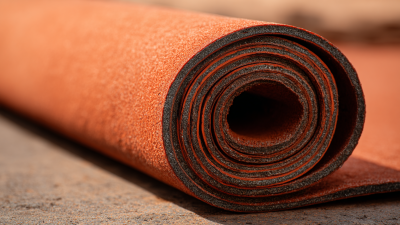
Exploring How Water Blocking Agents Enhance Durability and Longevity in Construction Applications
Blog Tags:

Sophia
-

Phone
-

E-mail
-

Whatsapp
-

WeChat
Jessy Lin
Paul Zhou:8613356391894 Eric Wong:8615963245439Emily Wu:8617866856171
-

WeChat
Paul Zhou

-

WeChat
Eric Wong

-

WeChat
Emily Wu








